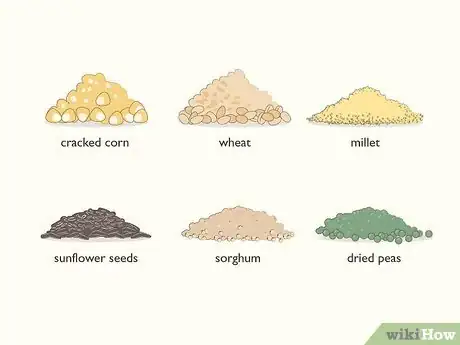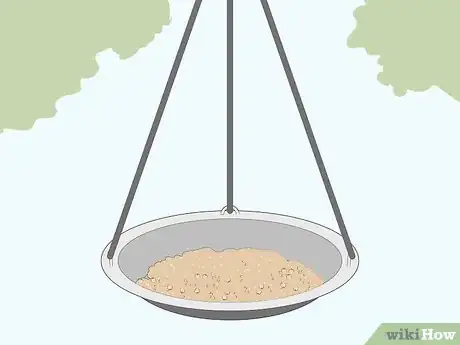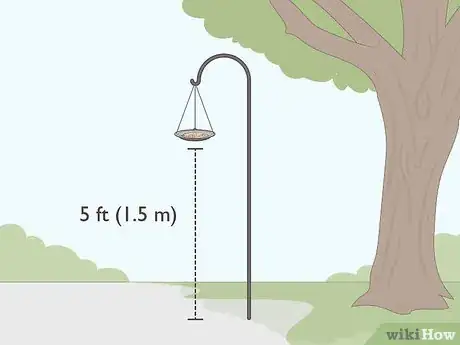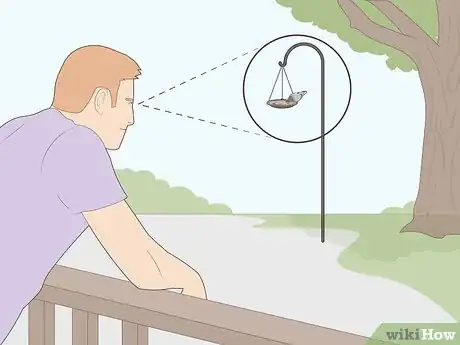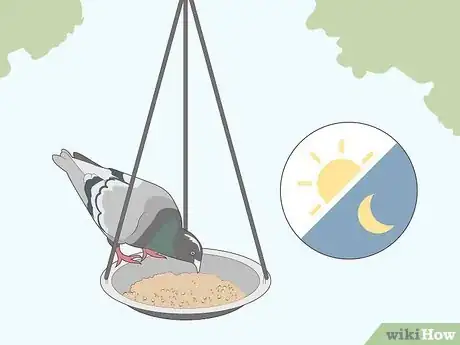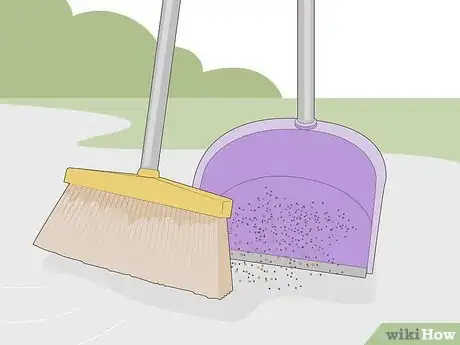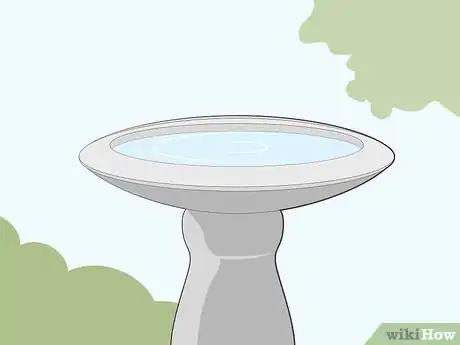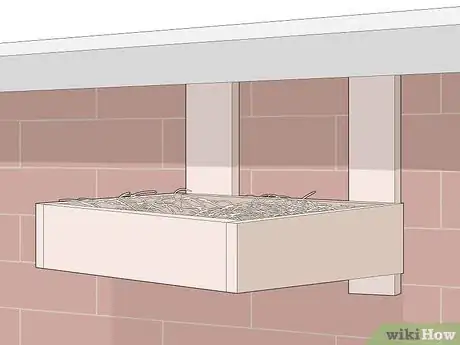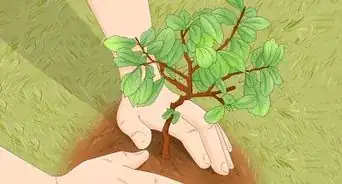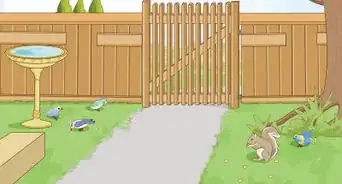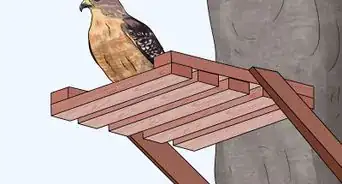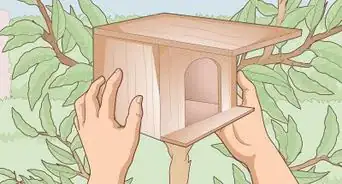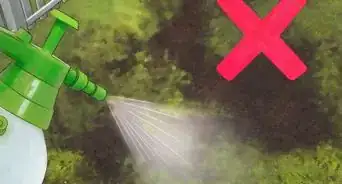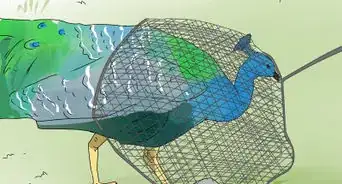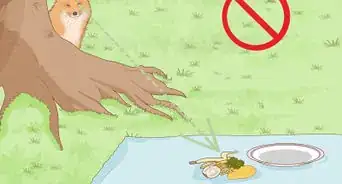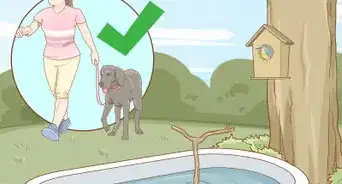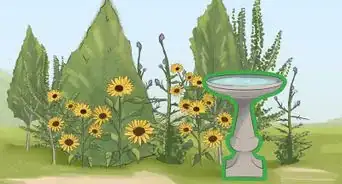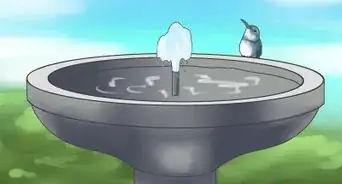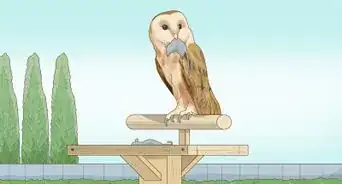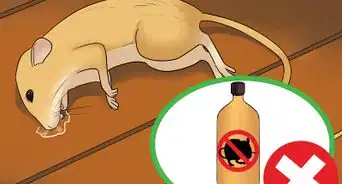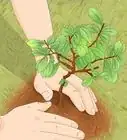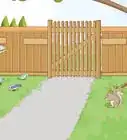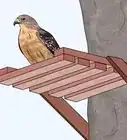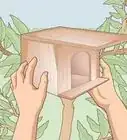This article was co-authored by Roger J. Lederer, PhD. Dr. Roger Lederer is an Ornithologist and the founder of Ornithology.com, an informative website about wild birds. Dr. Lederer has spent over 40 years teaching, studying, and writing about birds. He has traveled to over 100 countries to study birds. Dr. Lederer is an Emeritus Professor of Biological Sciences at California State University, Chico, and has been a Department Chair of Biological Sciences and Dean of the College of Natural Sciences. He has written more than 30 research papers and 10 books on birds and a textbook entitled “Ecology and Field Biology.” Dr. Lederer has consulted the BBC, National Geographic, National Public Radio, ABC News, the Guinness Book of World Records, and numerous other organizations and publications.
There are 9 references cited in this article, which can be found at the bottom of the page.
This article has been viewed 36,810 times.
Pigeons are a common sight in cities and parks, and feeding them can be a fun experience. If you’re near a city or around rocky cliffs where wild pigeons roam, you can even attract them to your yard. It’s often as simple as putting some of their favorite foods outside. Making improvements to your yard, such as by adding a water source and well-pruned bushes, also helps. Keep in mind that feeding pigeons is illegal in some areas. If you’re able to attract them, you can enjoy watching these docile birds stay busy during the day.
Steps
Feeding Pigeons
-
1Select seeds and grains that pigeons normally eat in the wild. You can’t go wrong with cracked corn and wheat. Some other foods pigeons eat include millet, sunflower seeds, dried peas, and sorghum. Pigeons are also well-known for picking up food left behind by people, such as bread crumbs, fries, and anything else that looks like it might be tasty. They sometimes eat fruit and bugs, but they mostly prefer seeds and grain when they can get it.[1]
- The food doesn’t have to be cooked at all. Pigeons eat raw grains and seeds.
- People food doesn’t offer any nutritional value to pigeons, so avoid it if you can. Many people enjoy feeding them crumbled bread, for instance, which works but isn’t the best choice if you want to keep birds healthy.
-
2Choose an open platform or tray feeder that pigeons can perch on. Pigeons are bigger birds, so they can’t use small feeders. Platform feeders are just open boxes. Try using one with wide side ledges for pigeons to stand on while they reach for the food.[2]
- You can use other types of feeders, like hopper or tube feeders, as long as they are accessible with sides for pigeons to perch on.
- Pigeons are also more than happy to eat from the ground as long as no one disturbs them. If you’re away from home, scatter some food to draw them in.
Advertisement -
3Hang the feeder low to the ground near plants and trees. Bird feeders can be hung from a wide variety of places, so you could hook yours to nearby tree branches, your home’s gutters, poles, and other things. Position it so it’s about 5 ft (1.5 m) from the ground to keep other animals out. Leave the feeder out in the open. If it’s within range of some bushes or trees, pigeons will have a place to hide from other animals, but they don’t go into heavily-wooded areas.[3] [4]
- Select a spot that is fairly protected from the wind so the feeder doesn’t get blown over.
- Another option is to place the feeder on the ground. Put it on something waterproof, like concrete, if the ground is wet. Keep an eye on the feeder and bring it inside when you’re done with it so it doesn’t attract other animals.
-
4Sit quietly at a distance to avoid scaring approaching pigeons. Stay as far back as you can without losing sight of the food. Although city and park pigeons are very accustomed to people, wild ones are a little skittish. Once they get more accustomed to your feeder, you can move closer. Stay as still as possible to avoid scaring feeding pigeons while they are getting used to your presence.[5]
- If you’re going to a park, the pigeons there most likely have been around people for a while. You can sit on a bench and they will probably come up close to you when you spread a little food around.
-
5Feed pigeons around the same time every day to attract more. Ideally, feed them in the morning and evening. That is when they are most likely to be flying around in search of food. If a pigeon spots the food, it may be a little hesitant about approaching it at first. If you keep placing the food there, the pigeon will come to expect it and eventually approach it.[6]
- For example, try feeding them from 8:00 to 10:00 AM and 5:30 to 7:00 PM. However, pigeons can be spotted all day long, especially if you live near a city.
- Although many pigeons have adapted to people, wild ones are still a little skittish. Be patient! You’re bound to draw one in with your feeder.
Drawing Pigeons to Your Yard
-
1Sweep up hulls and other debris after pigeons are done feeding. Whenever you leave birdseed out, the shells end up scattered underneath the feeder. Clean them up as soon as possible with a brush and dustpan. Remove bird feces from concrete and other solid surfaces as well by using a plastic scraper. You can then tidy up by mixing 1 tablespoon (15 mL) of dish soap into 1 US gal (3,800 mL) of warm water and mopping.[7]
- Uneaten seeds and hulls attract rodents and can lead to weeds in your yard, so eliminate them at least once a week.
- Pigeons don’t mind eating seeds off the ground, but they may stay away if they have to dig through hulls.
-
2Set up a shallow birdbath with fresh water. Try using a standing birdbath with wide side ledges for the pigeons to stand on.[8] Place it at least 6 ft (1.8 m) away from your home and other places cats could hide. If you can, keep it out in the open but close to nearby bushes or trees. Keep it filled with clean tap water.[9]
- Pigeons are more likely to visit places with an accessible source of water. That includes creeks, streams, ponds, and water features.
- Plan on washing out birdbaths 2 to 3 times a week. Refill them with fresh water.
-
3Hang a nesting shelf in your yard to keep pigeons around. A pair of pigeons may settle in and stick around to hatch their eggs. Place the nest out in the open somewhere 7 to 12 ft (2.1 to 3.7 m) high. You could hang it from the eaves of your home, for instance. Many types of pigeons nest during the winter, but there are plenty of others that nest at different times of the year.
- Regular birdhouses won’t work for pigeons. They are too big to fit inside. Shelves are open, making them the better choice.
- You won’t have to fill the shelf with any sort of nesting material unless you’re in an area that doesn’t have many bushes, trees, or grass. If nesting material is hard to find, leave out grass clippings, twigs, and pine needles for the birds to use.
-
4Plant some shrubs, bushes, or trees if there aren’t any nearby. You could also stack branches and twigs into a brush pile left out in the open. Pigeons don’t go into areas that are packed with plants, but they like yards with a few hiding spots scattered around. If these spots are close to food and water, they will be more likely to stop by or even stay. In addition, the material from any plants nearby can be used to build nests.[10]
- Prune your trees and bushes to keep them accessible. Eliminate tangled branches, or else pigeons won’t be too interested in visiting those spots.
- Pigeons generally aren’t that picky about where they nest, so you don’t need a ton of greenery to draw them into your yard. Less is often more with them.
Expert Q&A
-
QuestionWhat do pigeons like to eat the most?
 Roger J. Lederer, PhDDr. Roger Lederer is an Ornithologist and the founder of Ornithology.com, an informative website about wild birds. Dr. Lederer has spent over 40 years teaching, studying, and writing about birds. He has traveled to over 100 countries to study birds. Dr. Lederer is an Emeritus Professor of Biological Sciences at California State University, Chico, and has been a Department Chair of Biological Sciences and Dean of the College of Natural Sciences. He has written more than 30 research papers and 10 books on birds and a textbook entitled “Ecology and Field Biology.” Dr. Lederer has consulted the BBC, National Geographic, National Public Radio, ABC News, the Guinness Book of World Records, and numerous other organizations and publications.
Roger J. Lederer, PhDDr. Roger Lederer is an Ornithologist and the founder of Ornithology.com, an informative website about wild birds. Dr. Lederer has spent over 40 years teaching, studying, and writing about birds. He has traveled to over 100 countries to study birds. Dr. Lederer is an Emeritus Professor of Biological Sciences at California State University, Chico, and has been a Department Chair of Biological Sciences and Dean of the College of Natural Sciences. He has written more than 30 research papers and 10 books on birds and a textbook entitled “Ecology and Field Biology.” Dr. Lederer has consulted the BBC, National Geographic, National Public Radio, ABC News, the Guinness Book of World Records, and numerous other organizations and publications.
Ornithologist Get a bag of dove food. Doves are technically pigeons, so it will have the right seeds and grains in it. To get a good mix of food, shop online or stop by your local pet store.
Get a bag of dove food. Doves are technically pigeons, so it will have the right seeds and grains in it. To get a good mix of food, shop online or stop by your local pet store.
Warnings
- Many areas consider pigeons to be a nuisance and have rules against feeding them. Check the laws in your area to avoid getting into trouble.⧼thumbs_response⧽
- Only feed pigeons food that you know they eat. Don't feed them bread with mold, and remember to give bread in small pieces.⧼thumbs_response⧽
Things You’ll Need
Feeding Pigeons
- Seeds and grain
- Planter or tray feeder
- Hanging hook
Drawing Pigeons to Your Yard
- Broom
- Dustpan
- Plastic scraper
- Birdbath or alternative water container
- Nesting shelf
- Thick shrubs and bushes
- Pruning shears
References
- ↑ https://edis.ifas.ufl.edu/uw117
- ↑ https://forthebirds.popandthistle.com/attracting-mourning-doves-to-bird-feeders-which-feeder-is-best/
- ↑ Roger J. Lederer, Ph.D. Ornithologist.
- ↑ https://cals.arizona.edu/yavapai/anr/hort/byg/archive/backyardbirdfeeding.html
- ↑ https://fyi.extension.wisc.edu/wi4hpublications/files/2015/10/4H135spf.pdf
- ↑ https://www.sandiegocounty.gov/content/dam/sdc/common_components/images/awm/Docs/ipm_pigeon.pdf
- ↑ https://schoolipm.colostate.edu/docs/factsheets/pigeons.pdf
- ↑ Roger J. Lederer, Ph.D. Ornithologist.
- ↑ https://edis.ifas.ufl.edu/uw117
About This Article
If you'd like to attract pigeons, use seeds and grains that pigeons love, like millet, sunflower seeds, dried peas, and sorghum. Dove food from a pet store also works great. Scatter the seeds and grains on the ground or place them in an open platform bird feeder. Feeding pigeons at the same time and place every day will help attract more of them. They usually feed during the morning and evening. Set up a water source for the pigeons too, like a bird bath or small fountain, so they're more likely to stick around. You can also attract more pigeons by providing them with shelter, like a dovecote, a nesting shelf, or even just some shrubs.
